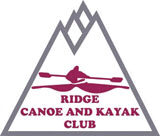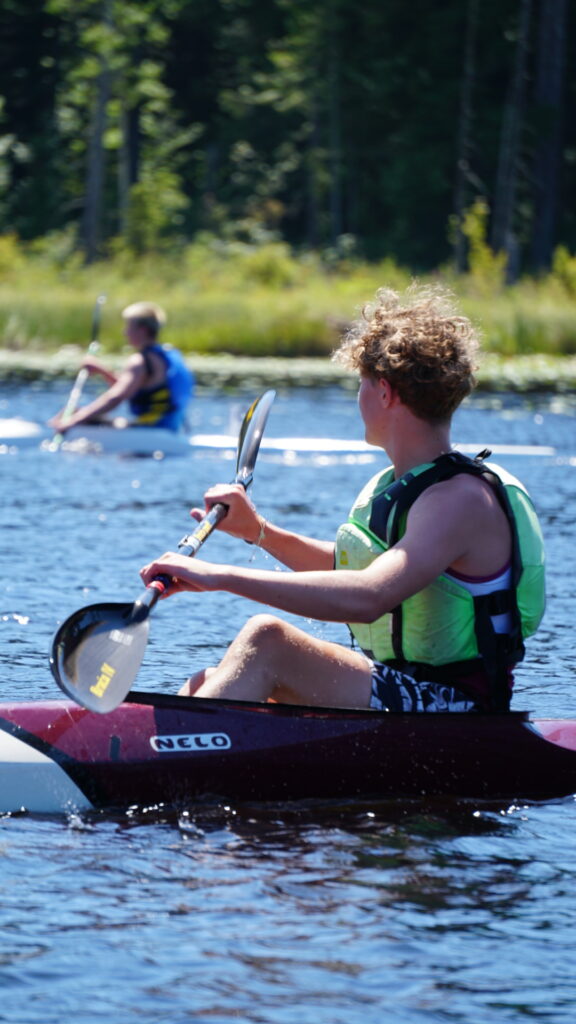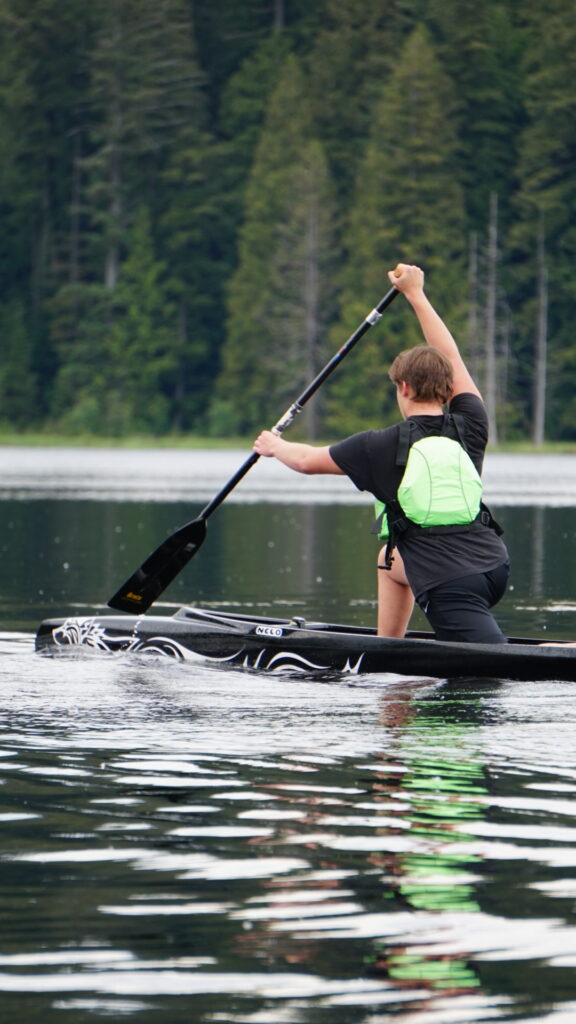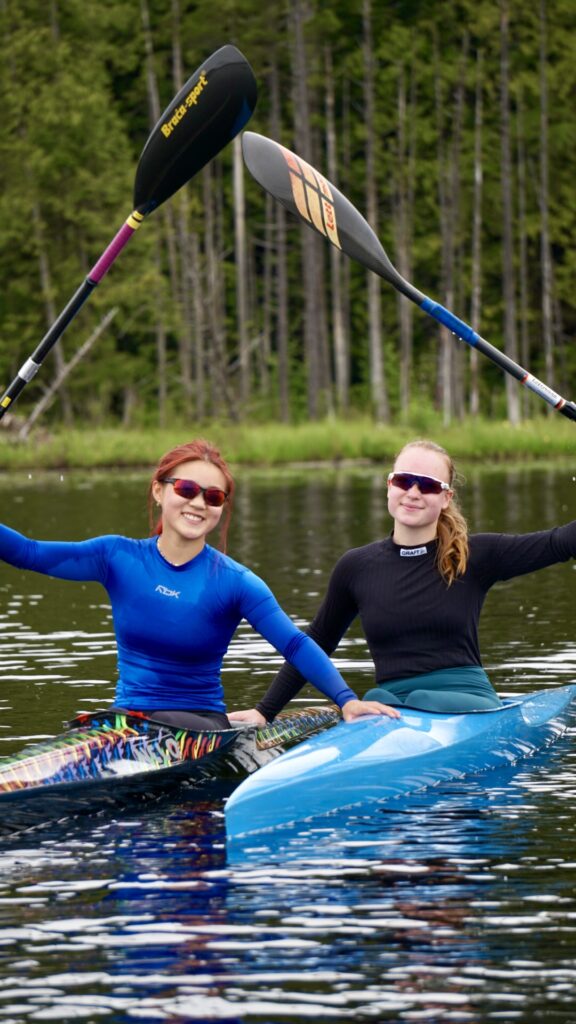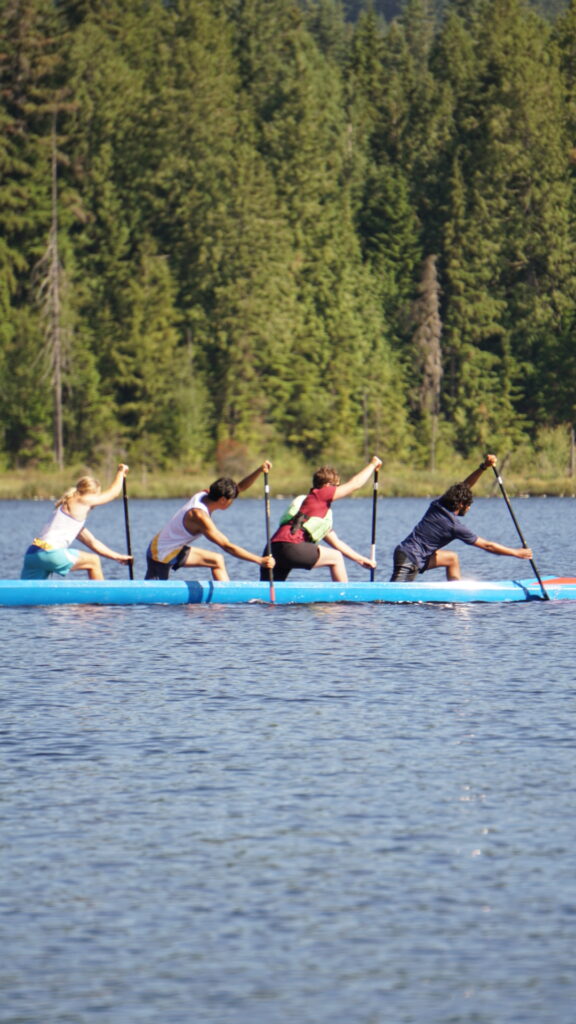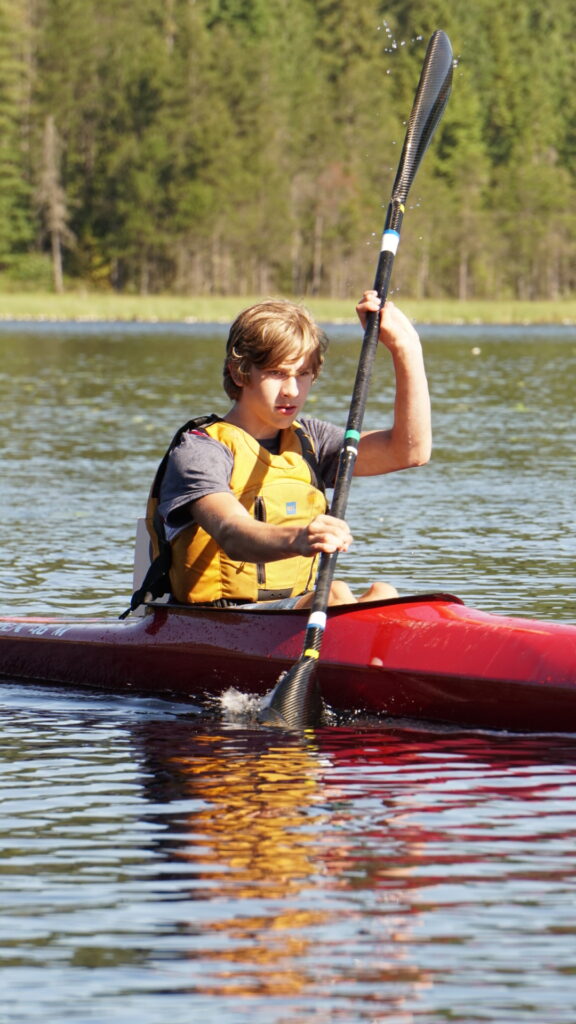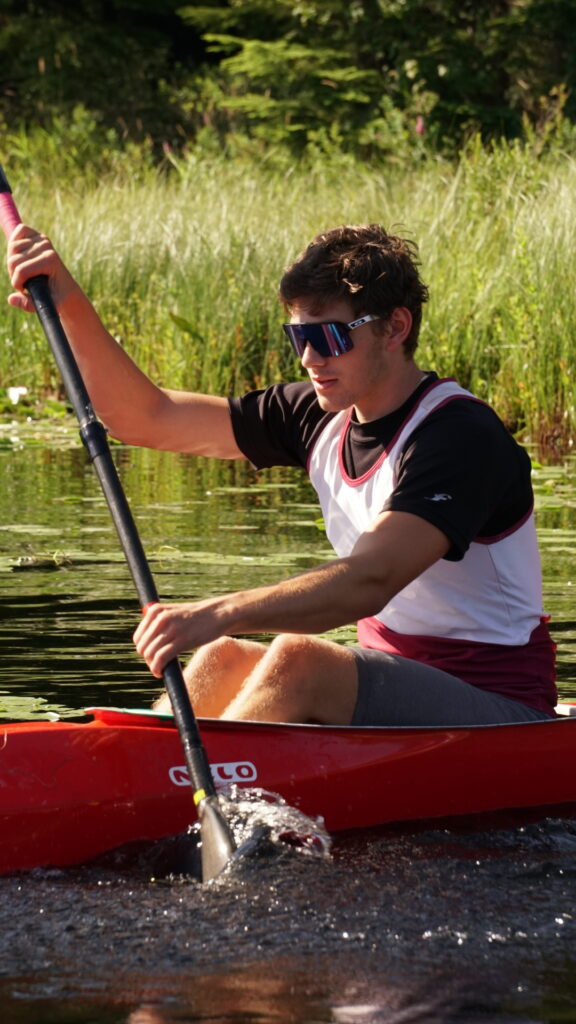Sprint canoe kayak is a full-body sport and is all about speed on the water. Strength, technique, endurance, and raw speed are all elements of this Olympic discipline. In addition to the most elite athletes, sprint paddling can be enjoyed by kids and adults who want to get out on the water. It is a sport that involves the entire body, including the legs and abdominal muscles, which work together with the arms to generate power each stroke. Elite athletes train for hours each week on and off the water.
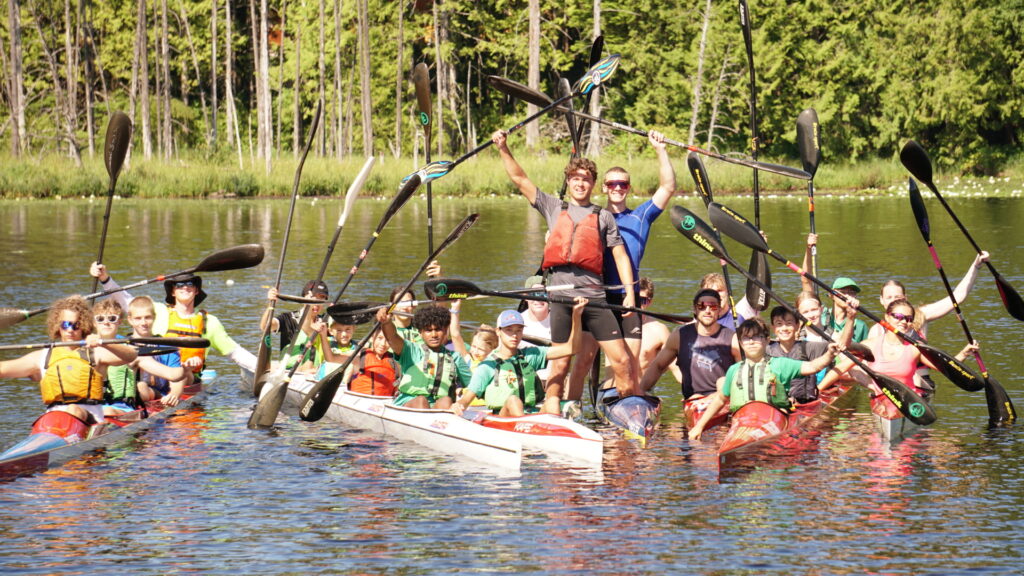
Equipment
Racing canoes and kayaks are extremely narrow and balancing in them requires some skill. Boats used in competition must meet international standards governing length and minimum weight. There are one, two and four person kayaks and canoes. The main race distances are 200, 500 and 1000 metres. The 200 metre is a pure sprint event which attracts paddlers with the fastest raw speed. Endurance is a bigger factor in the 1000 and 500 metre events. Athletes usually specialize in an event later in their career.
Kayakers use a double-bladed paddle and are seated in the boat. They have a rudder for steering that is controlled by a stick between their feet. Some will wear a spray skirt to prevent water from getting in the boat, particularly in windy or wavy conditions. In kayak team boats, the person sitting in the front controls the steering.
Canoers balance in a high-kneel position on one knee and paddle only on one side of the boat. They use a single-bladed paddle with a “T-grip” held in their top hand. Canoers steer entirely with their paddle and do a “J” stroke to make the boat run straight. Paddlers specialize on the right side or left and are usually paired up with the opposite-sided paddler for team boats. In team boats, the back person of the canoe steers.
Competition
Nine boats line up head-to-head, spaced across the race course in nine-metre wide lanes. Buoys mark the lanes along with the Start and Finish Lines. The Starter will ensure boats are in line for the start and controls the start command – “Ready, Set, Go.” Paddlers race down the course staying within their lane of buoys until they cross the finish line. Timers and Finish Line Judges record the position of finish and race time for each athlete.
A typical competition format starts with preliminary heats in which the fastest boats advance to the final. The fastest qualifiers are seeded in the middle lanes for the final.
There are also longer distance races like the 5000 metre that begin with a mass start. Conventional lanes are thrown to the wayside as paddlers do loops of the course. They jockey for positions around the turns, strategize, and ride wash with their competitors to conserve energy for the final breakaway in a true test of on-water endurance.
Sprint Lingo
Blade/shaft – on a paddle, the blade is the wide end part that grips the water and the shaft is the cylindrical connector. A kayak paddle has two blades and a canoe paddle has one blade and a “t-grip” on the other end.
Bow – the nose or front of a boat.
Catch/Exit – the catch is the first part of the stroke where the paddler grabs the water with their paddler. The exit is at the end of the stroke when the paddler takes the paddle out of the water.
C1 – a canoe paddled by one person. C2 is for 2 people and C4 for four.
Cockpit – the open part of a kayak in which a kayaker sits.
Gunwale – the top edge of a canoe that runs around the big open area in which a canoer kneels.
K1 – a kayak paddled by one person. K2 is for 2 people and K4 for four.
Headwind/Tailwind – wind from the front slows paddlers down while a tailwind from behind speeds them up. Side winds are difficult to paddle in and when the wind is on an angle, it can be an advantage or disadvantage to either right-sided canoers or left-sided canoers
Floorboard – a canoer’s knee rests in a foam block that is molded for the athlete. They brace their back foot against a foot piece and their setup connected with a floorboard.
Lactic acid – something every high performance athlete is all too familiar with. As athletes push their limits, their muscles don’t get enough oxygen and will produce lactic acid. The athlete experiences a burning feeling. Athletes train to deal with lactic acid and those who can manage it the best are the ones who are able to hang on for the victory.
One minute to start – a command by the starter to call competitors to the line. Preliminary warnings of five and three minutes are also usually given. Once all the competitors are lined up evenly, the start will call “ready, set” followed by a loud blast that signals “go.”
Paddler or canoer/kayaker – all acceptable words to describe someone doing the sport. Canoer is specific to canoe and the same with kayak. Rowing is a different sport where the athlete faces the rear and uses an oar instead of a paddles. Steer clear of those rowing words when discussing CanoeKayak.
Paddle Twist – The two blades of a kayak paddle are angled differently so that a kayaker actually twists the paddle on each stroke. A paddler with a left-twist holds their left hand firm and allows the right side of the shaft to slide. A special grip is usually used for the fixed hand while rolled up tape is used to mark hand positions on a paddle.
Rudder – a small blade underneath a kayak at the back of the boat used to steer. The front paddler in the kayak moves the rudder stick with his or her feet to steer. Canoes do not have rudders but are steered entirely with the paddle.
Splashguard/Spray skirt – made of water resistant fabric or another material. In sprint kayak, a skirt is loose enough that it will come off if a paddler tips over.
Shoot – throwing your weight on the last stroke to jolt the nose of your boat to the finish line a little faster in an effort to edge out your competitors. A successful shoot can lead to the exhilarating announcer’s call of “he just got him at the line.” An unsuccessful shoot can lead to a competitor falling out of their boat before touching the finish line which can result in a disqualification if no part of the paddler’s body is touching the boat when they cross.
Stroke rate – the number of strokes a paddler takes per minute. Coaches use a special stroke rate watch to measure this and 200 metre sprinters can hit rates of 180 strokes per minute – that’s three strokes a second … or from a spectator’s point of view, really fast!
